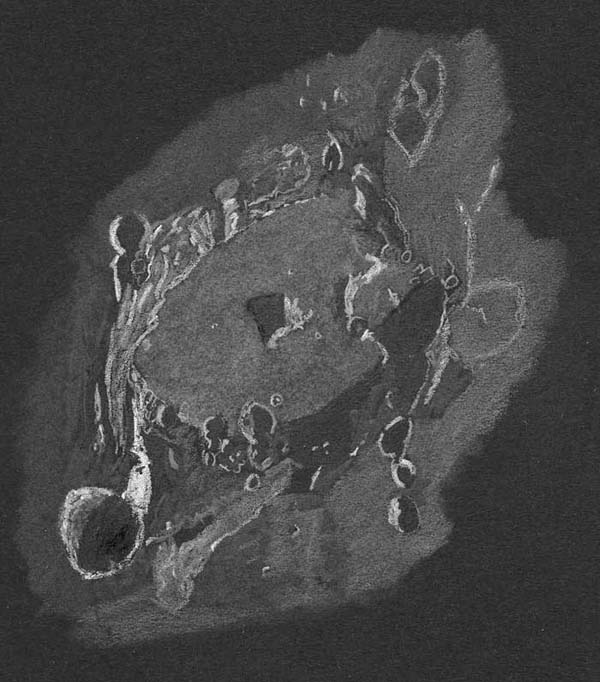
Lunar crater Albategnius
By Dale Holt
I awoke not particularly early at around 6am on Saturday December 1st, well it is
the weekend! I noted a fine gibbous Moon high in the South West from the bedroom
window. Hmm I haven’t made a Lunar sketch for a while, so out I went to the
observatory with my brew of tea and spent a while scanning the terminator for a
likely subject.
I picked out Albategnius. This is an ancient lunar impact crater 129km wide and
4.4km deep located in the central highlands. It is named after the Arabic Prince
and astronomer Al-Battani. The level interior forms a “walled plain”, surrounded
by the high, terraced rim. The outer wall is somewhat hexagon-shaped, and has been
heavily eroded with impacts, valleys and landslips. It attains a height above
4,000 meters along the northeast face. The rim is broken in the southwest by the
smaller crater Klein 44km wide and 1.5km deep.
The third prominent crater featured in my drawing is Halley to the North East of
Albategnius spanning 36km at a depth of 2.5km.
Telescope 14” F5 Newtonian reflector
Denk binoviewer with 2.5x nosepiece
x2 Celestron Axiom 23mm eyepieces giving 193x
Drawing on Black A5 Daler Rowney artist paper using Derwent pastel and water
colour pencils, conte sticks, black ink and blending stumps.

Dale,
This is a wonderful drawing of crater Albategnius. The drawing has perfect composition with shadow and light highlignts to give it depth and realism. Your selection of drawing materials is well thought out and works beautifully. Great sketching Dale!
Frank
Dale,
Nice drawing of an interesting subject. There is some evidence that Albategnius was the first lunar crater ever sketched–by Galileo in 1609. He got into a lot of trouble, too, by describing it as a walled plain “similiar to Bohemia”. The authorities didn’t like that. See ‘Sidereus Nuncius’ for details.
Michael Rosolina